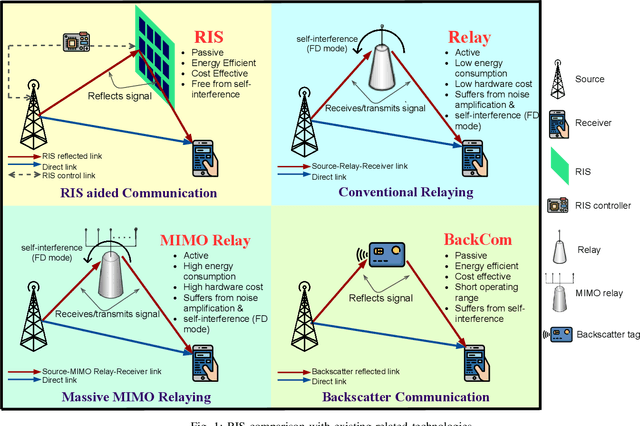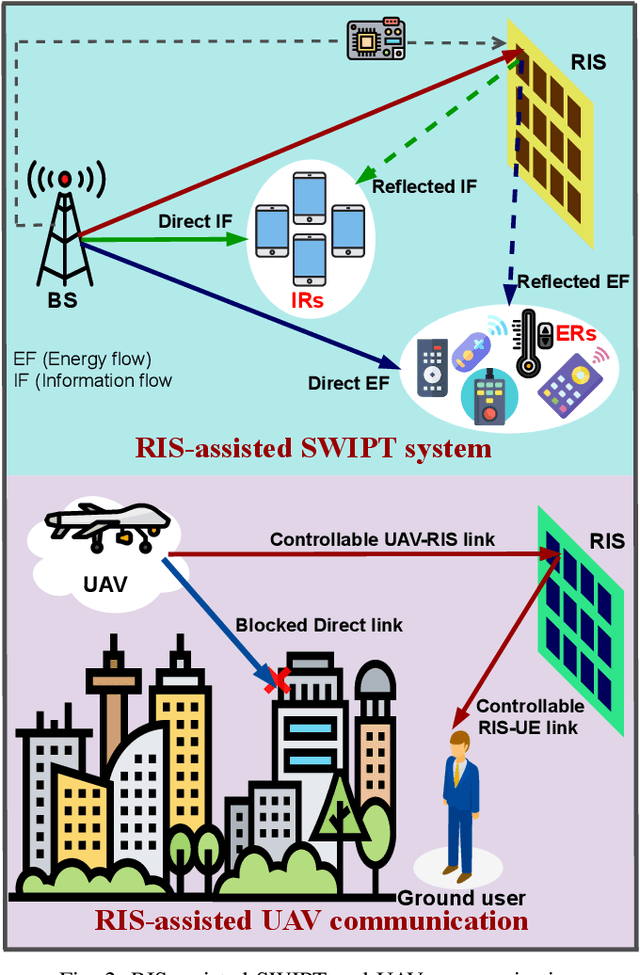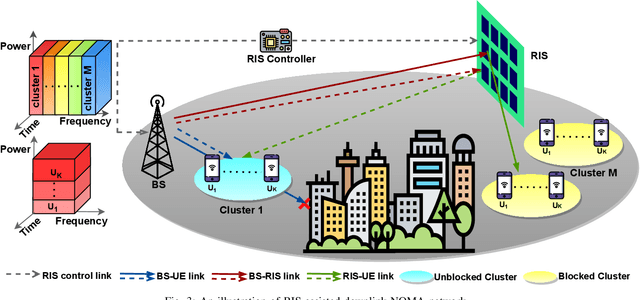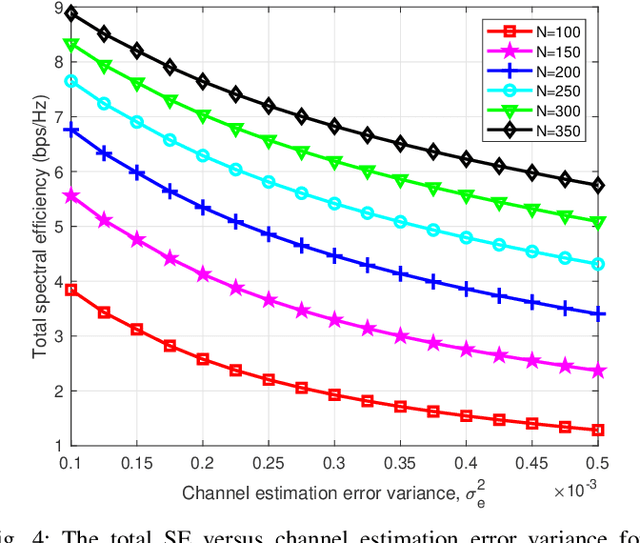Reconfigurable Intelligent Surfaces: Potentials, Applications, and Challenges for 6G Wireless Networks
Paper and Code
Jul 12, 2021



Reconfigurable intelligent surfaces (RISs), with the potential to realize a smart radio environment, have emerged as an energy-efficient and a cost-effective technology to support the services and demands foreseen for coming decades. By leveraging a large number of low-cost passive reflecting elements, RISs introduce a phase-shift in the impinging signal to create a favorable propagation channel between the transmitter and the receiver.~\textcolor{black}{In this article, we provide a tutorial overview of RISs for sixth-generation (6G) wireless networks. Specifically, we present a comprehensive discussion on performance gains that can be achieved by integrating RISs with emerging communication technologies. We address the practical implementation of RIS-assisted networks and expose the crucial challenges, including the RIS reconfiguration, deployment and size optimization, and channel estimation. Furthermore, we explore the integration of RIS and non-orthogonal multiple access (NOMA) under imperfect channel state information (CSI). Our numerical results illustrate the importance of better channel estimation in RIS-assisted networks and indicate the various factors that impact the size of RIS. Finally, we present promising future research directions for realizing RIS-assisted networks in 6G communication.
 Add to Chrome
Add to Chrome Add to Firefox
Add to Firefox Add to Edge
Add to Edge